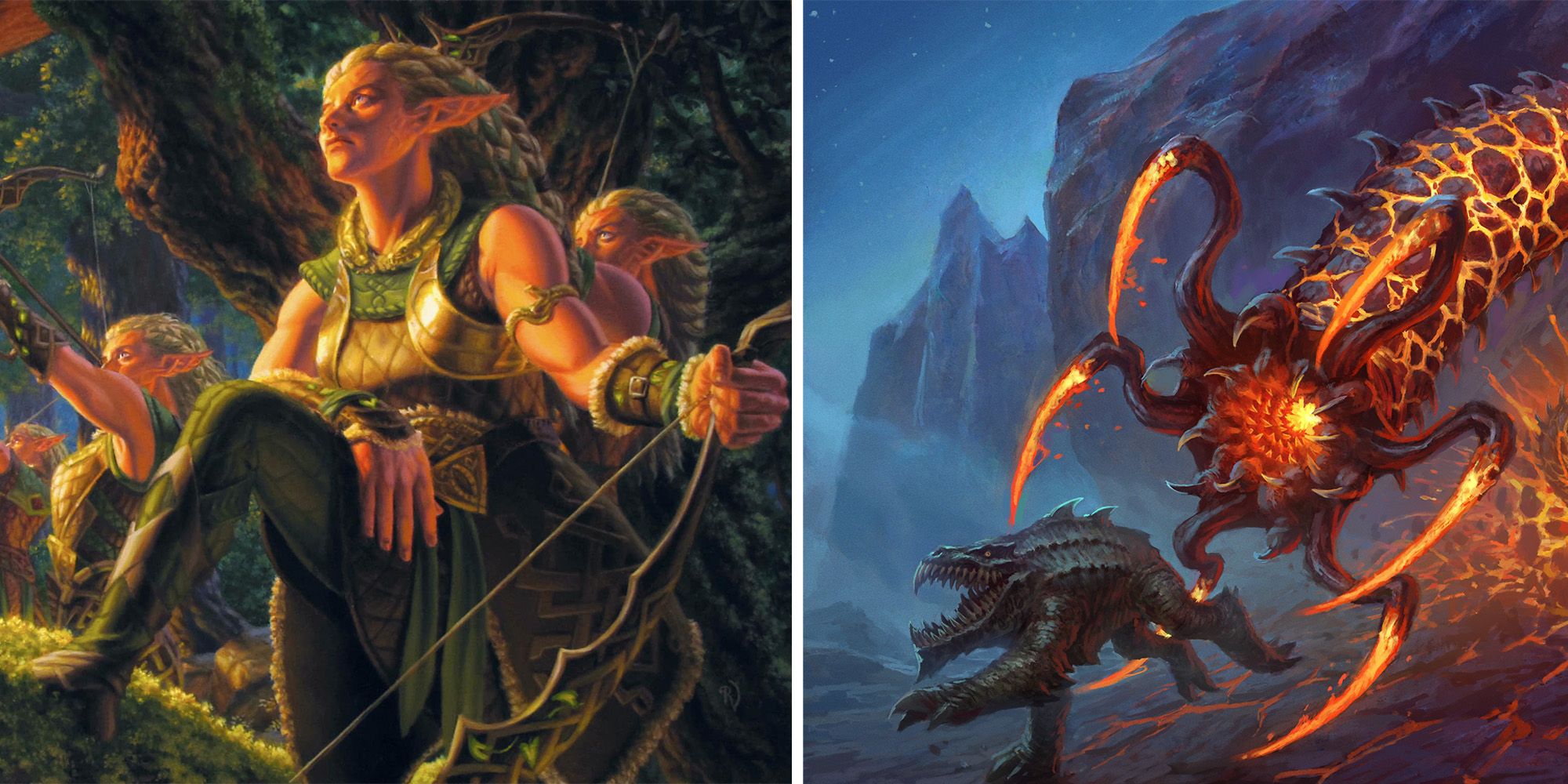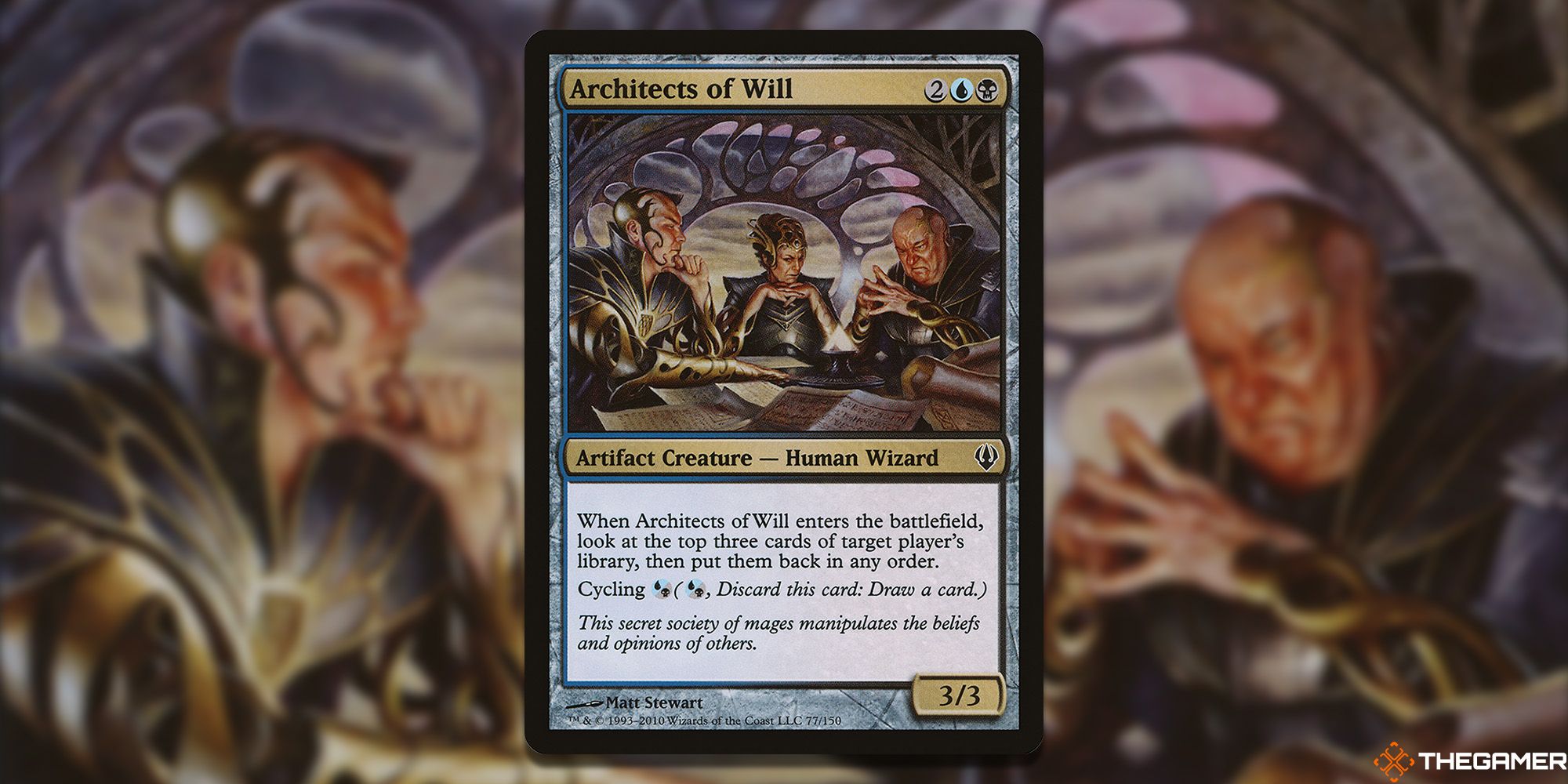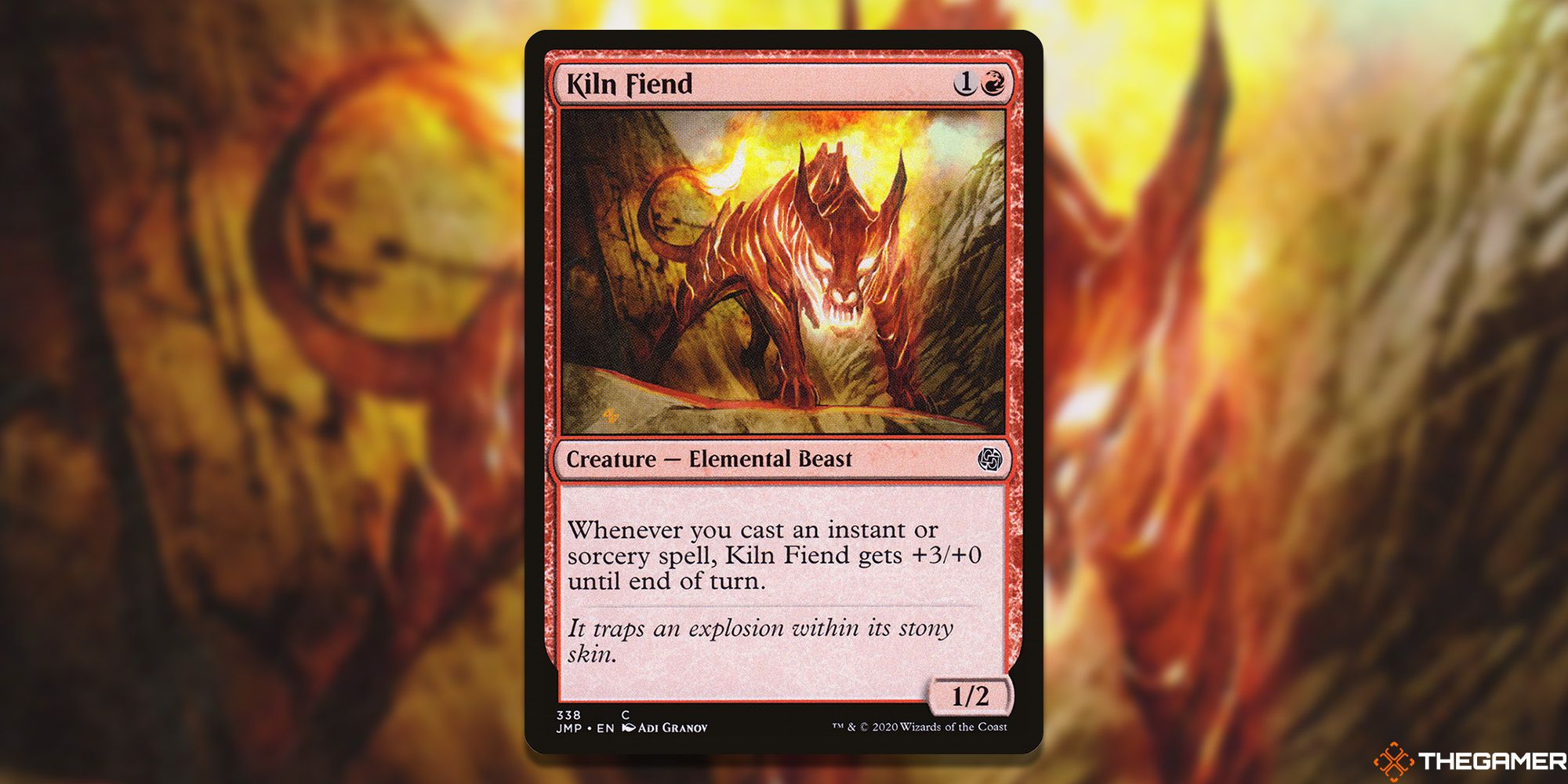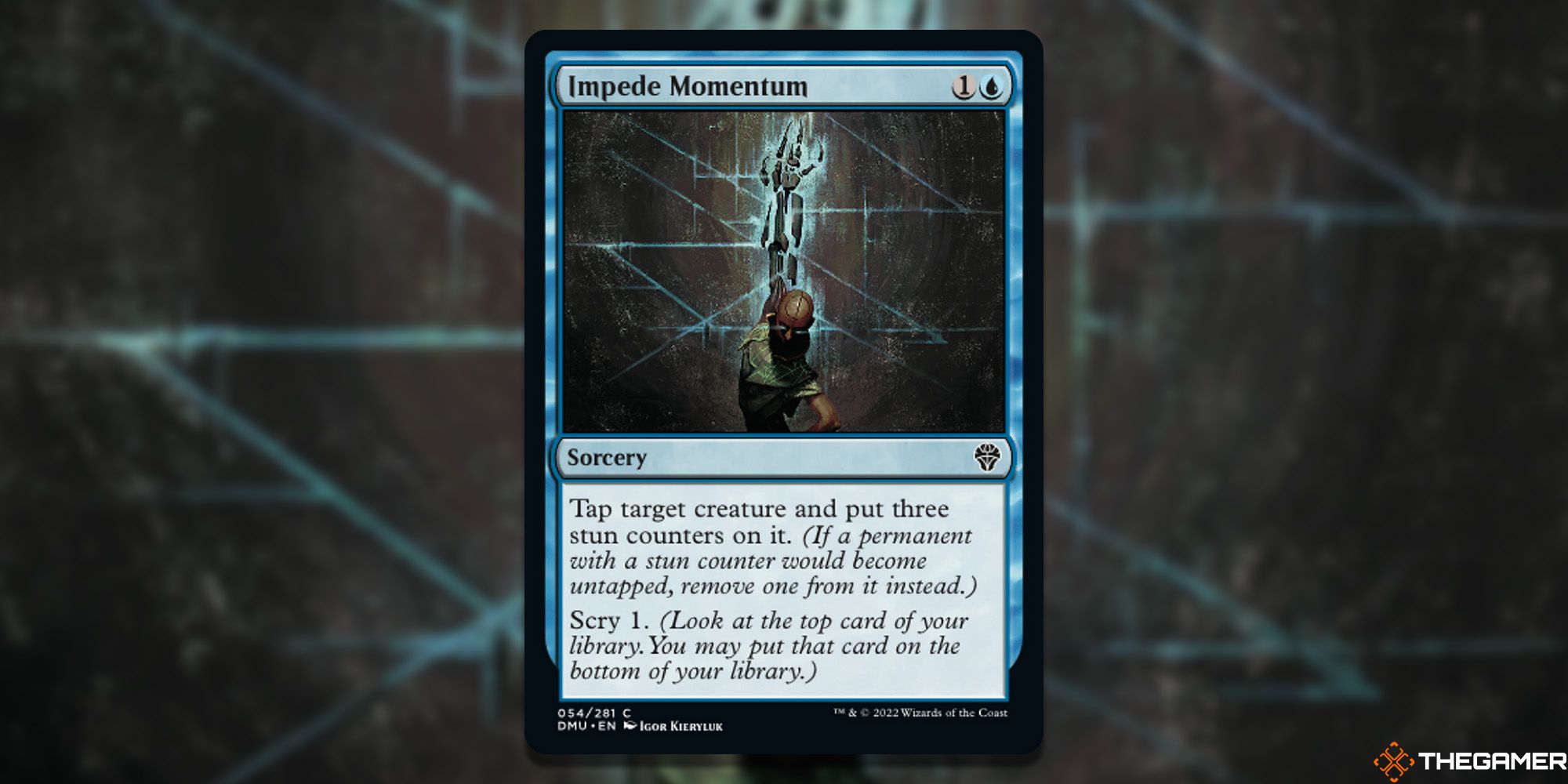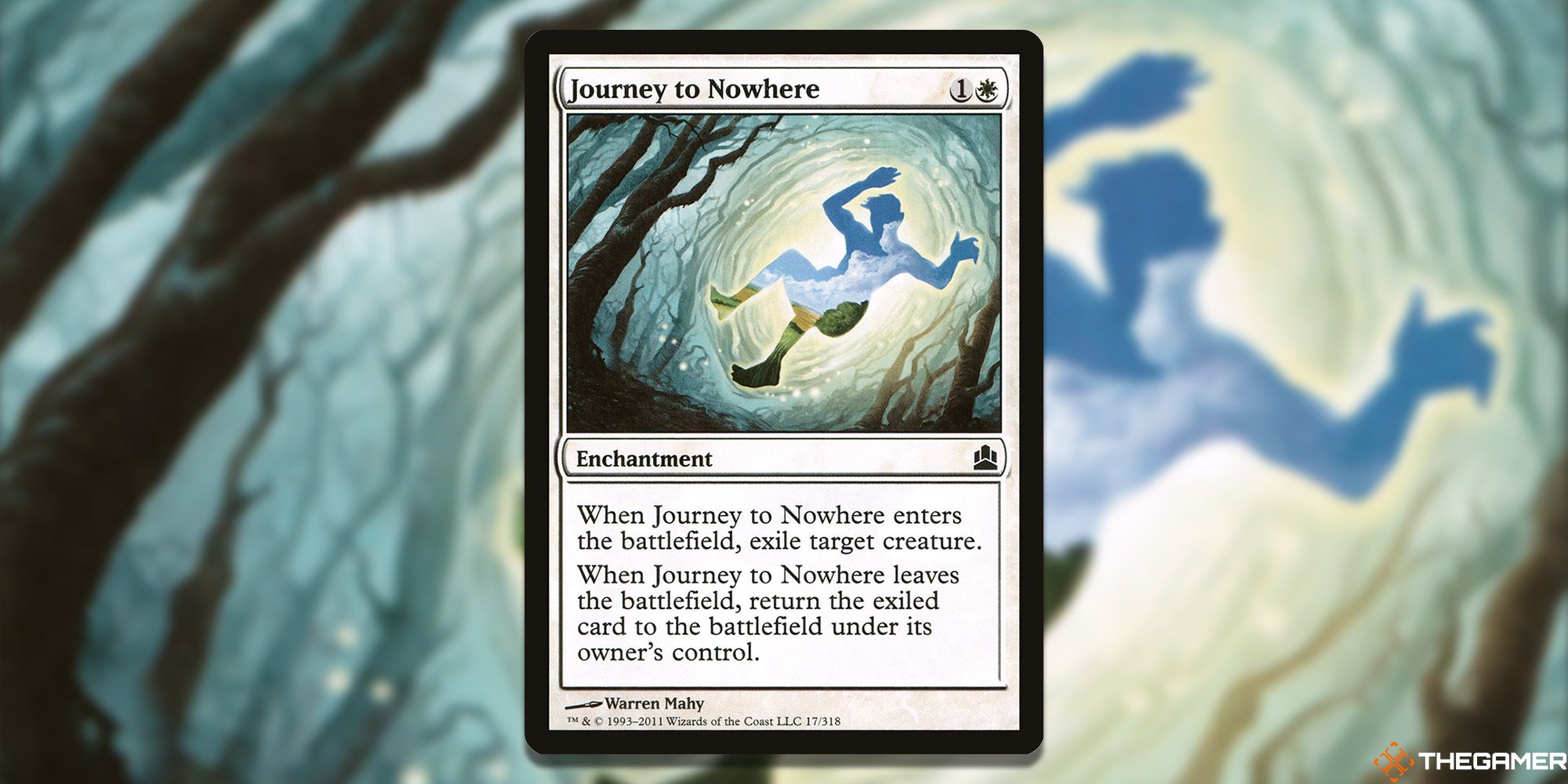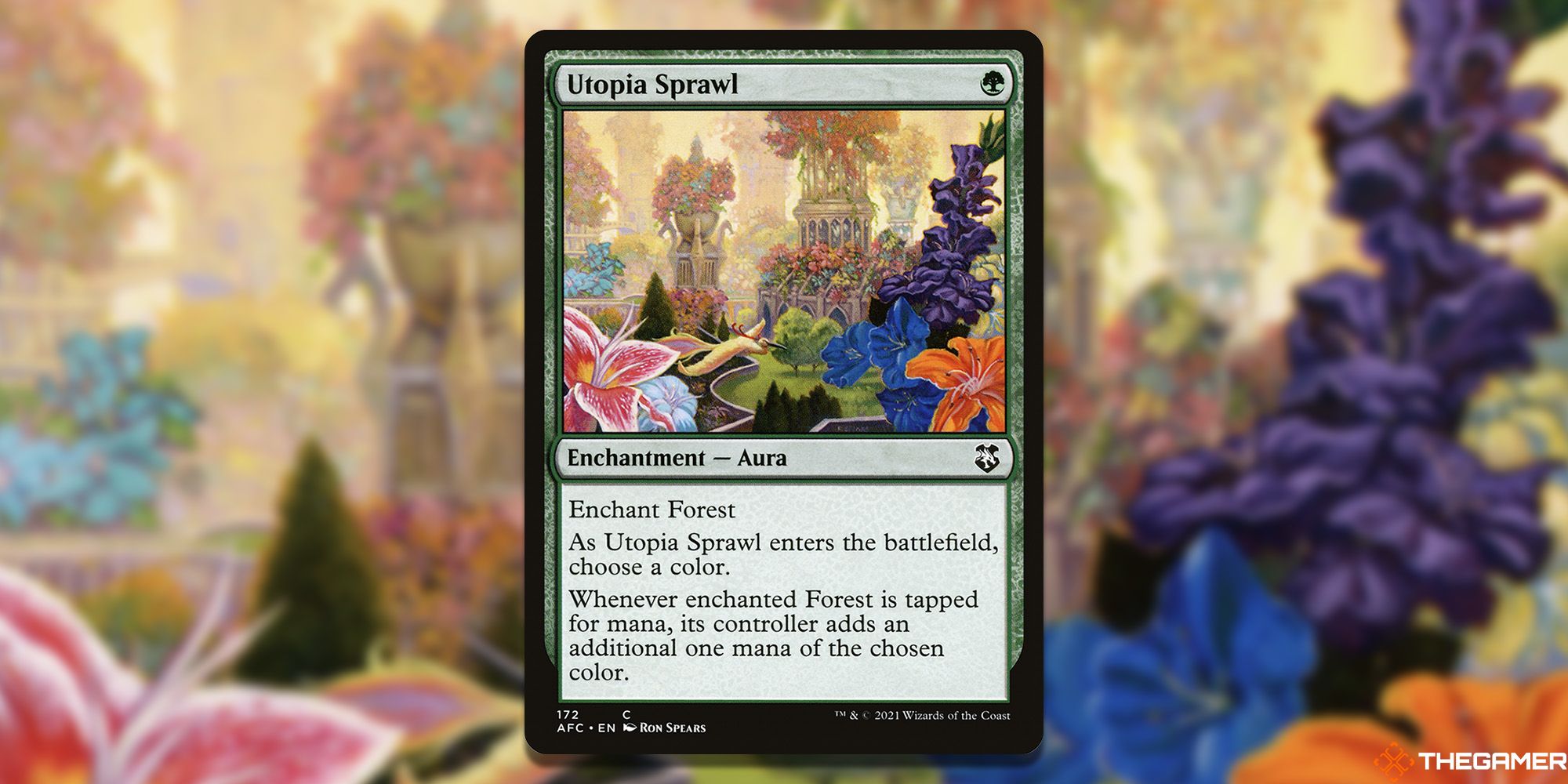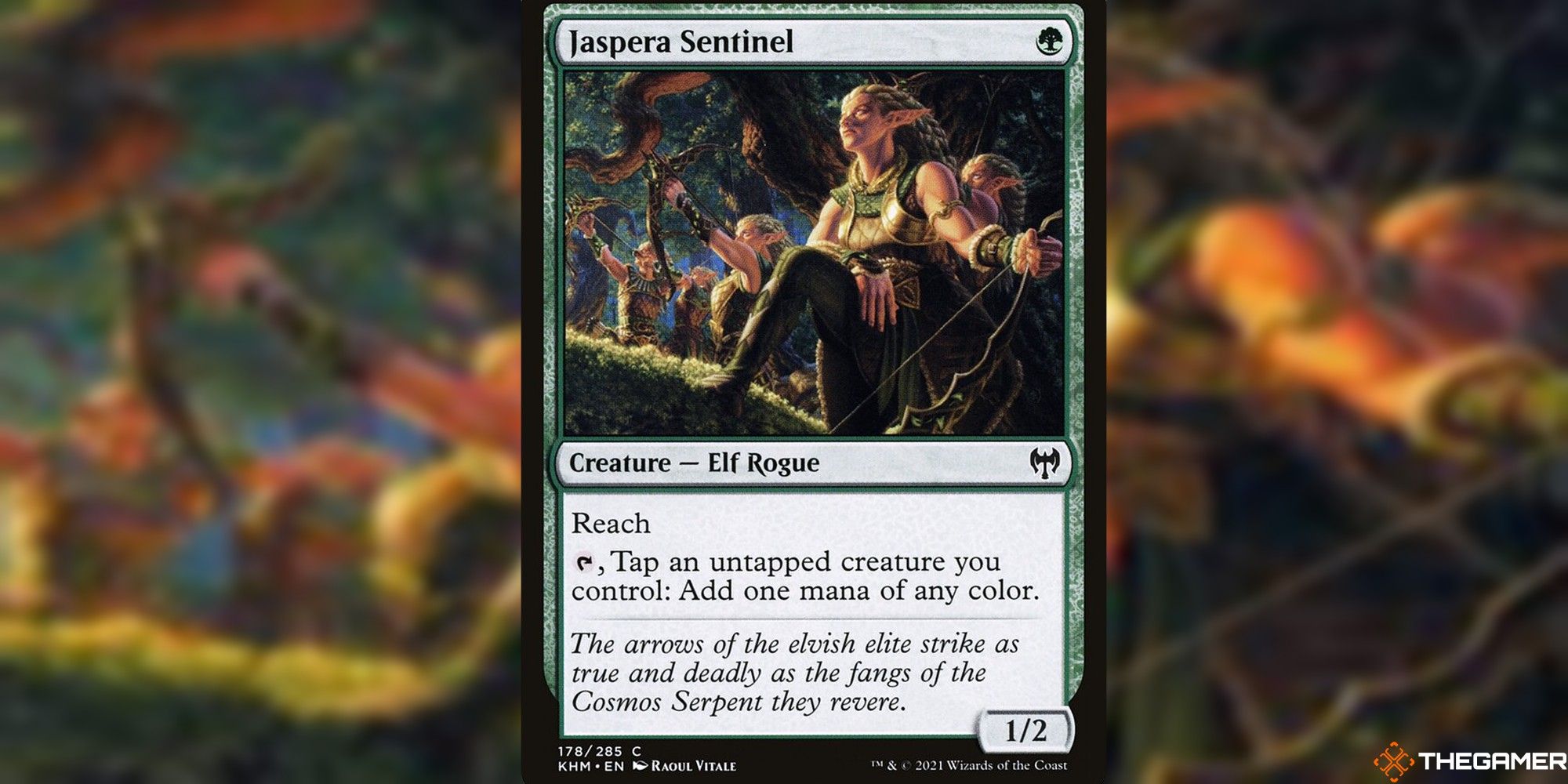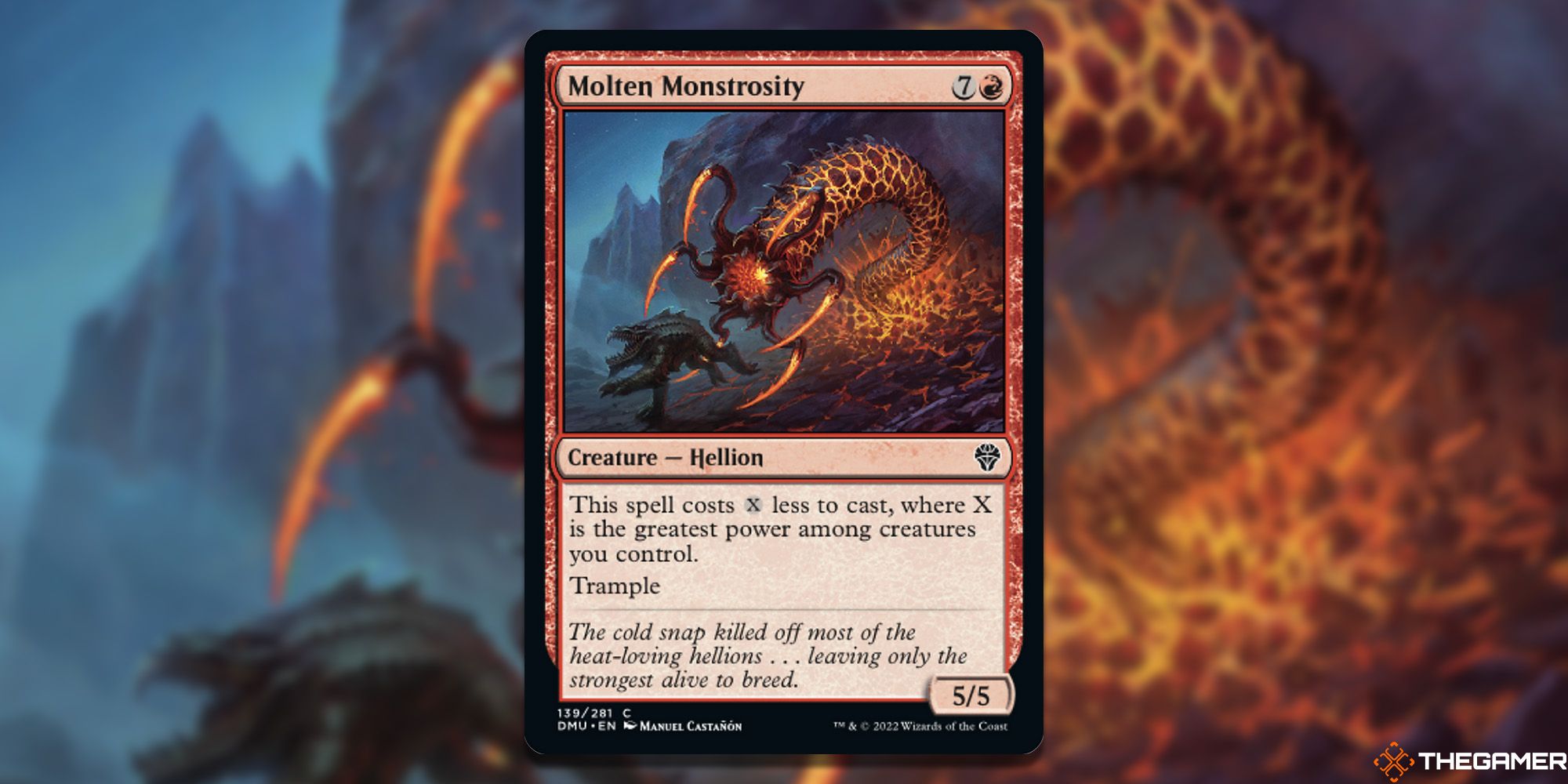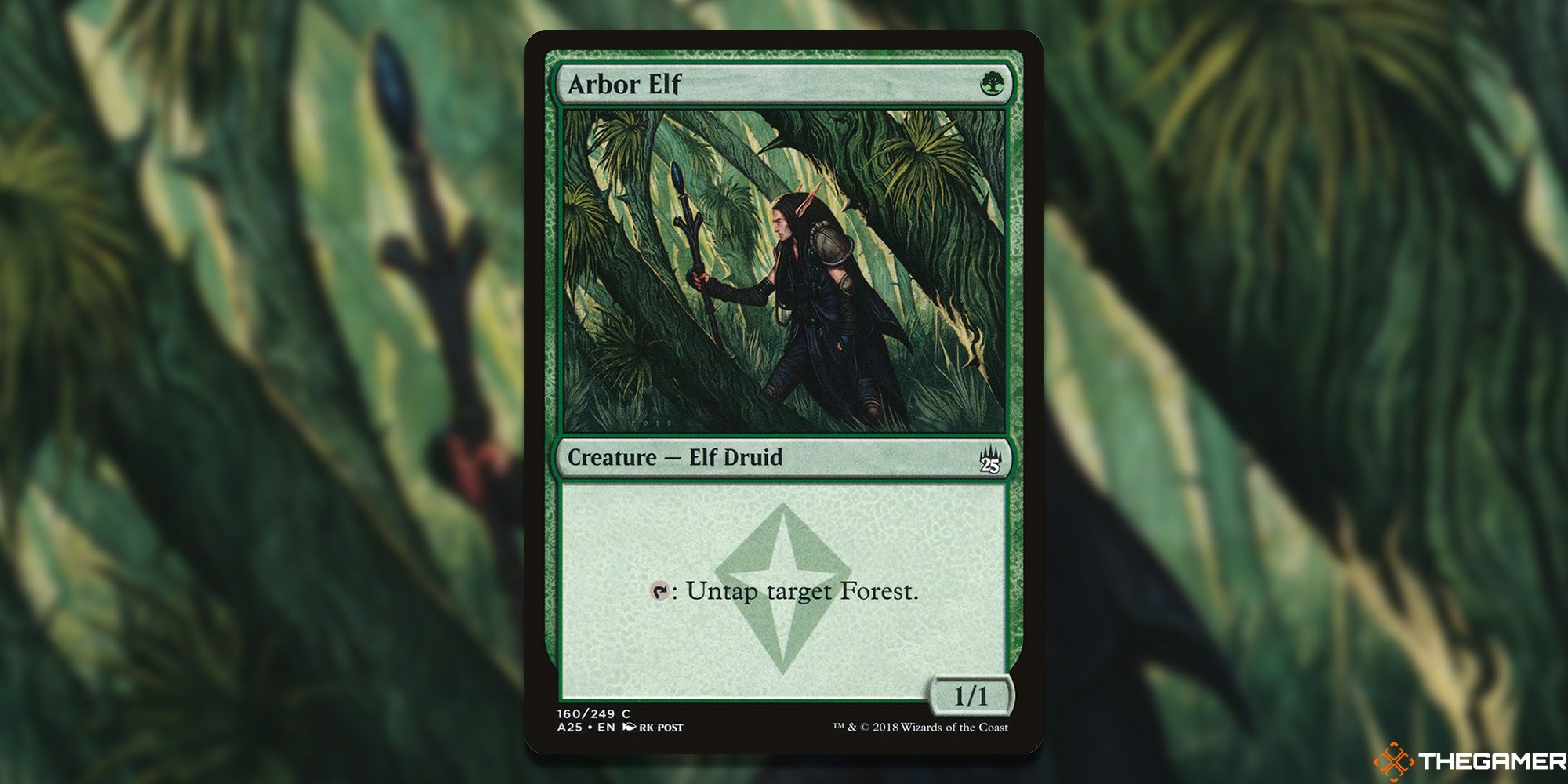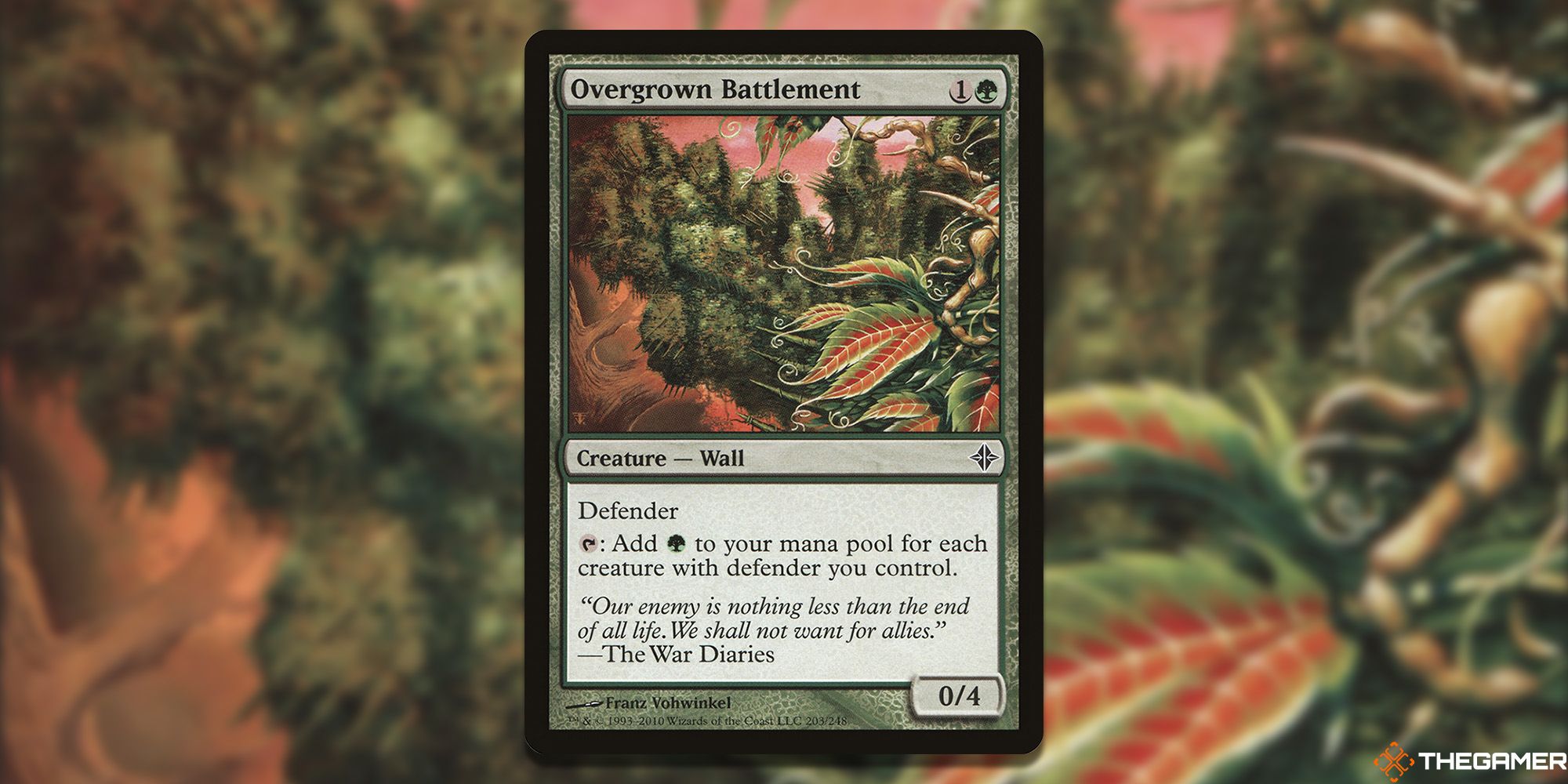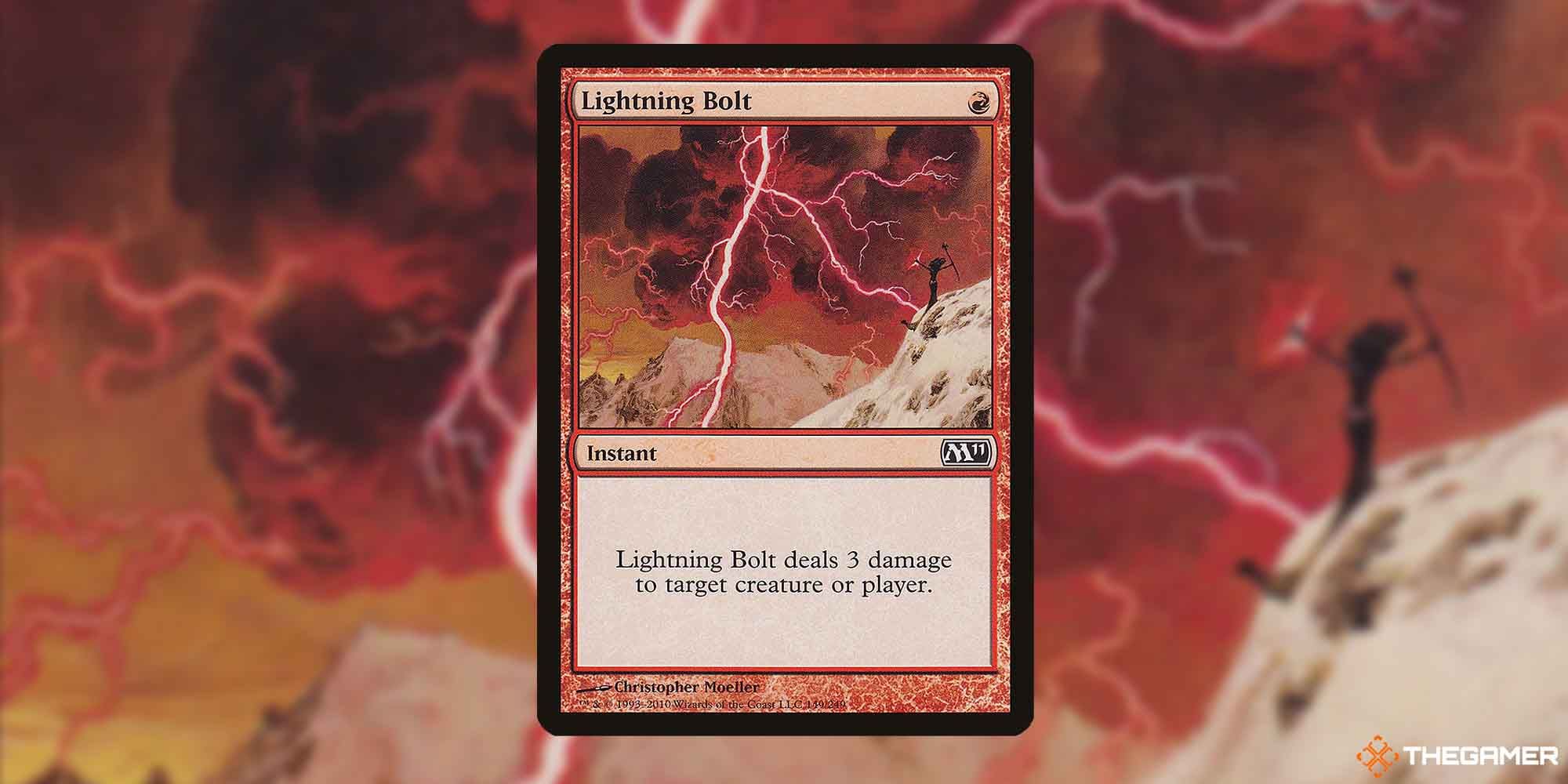Quick Links
The Pauper format is known for being easily accessible for players to jump into. While the name implies poverty, it’s actually a limitation for creativity and isn’t limited to players on a budget. With cards that are easily accessible and almost endless possibilities, Pauper is a deck format that any Magic: The Gathering player can start building immediately.
If you have never heard of the format before, or have no idea where to start, this guide will take you through the basics of building your first Pauper deck. While your Pauper decks can change and evolve as more cards are released, the basics of putting one together will never change.
What Cards Can Go Into A Pauper Deck?
A Pauper deck can only consist of cards of the common rarity (they have a black symbol in the center right). Any uncommon/rare/legendary cards are not allowed. This also applies to land cards, as you will not be able to use any land cards that aren’t at common rarity.
There are no limits on deck size, though you may want to keep it around the 60-70 card range when getting started. Pauper decks can consist of any color combination, though you should stick to one or two colors when building your first deck. You might see three colored decks, such as Grixis Affinity, but you may want to start with something simpler for your first deck. Something like Architect of Will might sound like a great card in a three-color deck:
But if you don't know what you are doing in Pauper, it might be wise to leave it out for now. Get a feel for your first deck's performance, and then switch in cards as necessary. There's no harm in going up to a red-blue-black deck once you understand where cards can fit in.
A ban list does exist for the Pauper format. While the ban list isn’t too important when playing with informed friends, Pauper games with other players should not have the following cards:
- Aarakocra Sneak
- Arcum's Astrolabe
- Atog
- Bonder's Ornament
- Chatterstorm
- Cloud of Faeries
- Cloudpost
- Cranial Plating
- Daze
- Disciple of the Vault
- Empty the Warrens
- Fall from Favor
- Frantic Search
- Galvanic Relay
- Gitaxian Probe
- Grapeshot
- Gush
- High Tide
- Hymn to Tourach
- Invigorate
- Mystic Sanctuary
- Peregrine Drake
- Prophetic Prism
- Sinkhole
- Sojourner's Companion
- Stirring Bard
- Temporal Fissure
- Treasure Cruise
- Underdark Explorer
- Vicious Battlerager
- Sinkhole
Decide Your Goal
While it is nice to get ideas and inspiration from other deck ideas, your first Pauper deck should have a goal in mind. Do you want to win games by dealing damage? Trying to win by wearing the other player down gradually? Maybe you want to aim for a defensive deck filled with counterspells?
Once you have a goal in mind, it’s easier to start finding cards that will fill that objective. Getting ideas from other decks will also allow you to tweak and change cards as you wish. Cards that would not thrive in formats such as Modern and Standard can potentially find new life in Pauper. Take Kiln Fiend as an example.
This card has several answers in older formats that would make it a below-average pick in a Modern deck. But if you were thinking about putting it in a Pauper deck, you may get more mileage out of it. Some of the best cards in Modern won't be around to make Kiln Fiend redundant, and you can deal considerable damage before it gets defeated. Kiln Fiend is a popular choice in aggressive Pauper decks, particularly mono-red as a result.
You can build other types of decks to test and investigate new ideas, as long as you know what a deck is trying to do.
You also want to think about what colors can help you achieve your goal. Offense is usually the domain of mono-red decks, while mono-blue decks are more defensive in nature. Sticking to one color at first can be useful, then supplemented with another color as you test it. Popular two-color combinations include red/green, black/blue, and white/blue. Don’t just put colors together because it looks cool; consider how adding a color would help your deck. Also ensure that you have ways to access both colored mana when necessary.
Gather The Cards You Need
Getting common rarity cards shouldn’t be difficult. You likely have many cards lying around after getting booster packs, or cards obtained from booster boxes. Local card shops might have bargain bins with common cards that often have cards from different sets you weren’t thinking of. It's not hard to find players who aren't using their common cards, especially if they have just bought a booster box and have searched for rare/mythic cards. Even pre-made decks can have a nice selection of common-rarity cards that are perfect for Pauper.
If you are being more selective, you can always use a sample deck builder online to put your ideas down, then purchase the cards online. While online prices can vary, common card prices should never set you back more than a few dollars.
For online Pauper decks, MTG Online will allow you to purchase cards that you need. For MTG Arena players, you will have to buy packs and get lucky with the sets you have access to. Thankfully, the cards you need for the Pauper format should not cost much to obtain. Even if MTG Arena won’t let you control the cards you can get, it is easy to find some substitutes in the meantime.
Think About Other Decks You Might Encounter
Even though this is your first time thinking about participating in the Pauper format, you do want to think about the type of decks you might encounter in competitive play. Your aspirations may be to play Pauper on a casual basis with your friends, or simply trying the format online. But it never hurts to think ahead and build your Pauper deck as if you were facing tournament-level opponents.
For example, mono-white Pauper decks (or any deck that includes white) will often run enchantments. You should be thinking about ways to deal with enchantments, such as Journey to Nowhere.
Journey to Nowhere can put one of your lands out of commission, or remove an artifact that you were counting on for your strategy. Having a way to get around enchantments, even if it is only temporary, might be the difference between winning and losing.
Consider Your Deck’s Land/Non-land Ratio
Just because you’re playing a Pauper deck doesn’t mean you can skimp on land cards. The typical number of land cards in a deck is 24-28 lands (assuming a typical deck of 60). If your cards don’t require much mana to cast, you might get away with around 20 lands. You should also think about ways to bring lands/mana to your hand, which can cut down on the lands you need.
Think about alternative ways to add mana to your deck, especially if you are running two colors. For example, green Pauper decks sometimes include enchantment cards such as Utopia Sprawl. Utopia Sprawl allows you to enchant a Forest and add an additional one mana of the color that you choose. This lets you run multiple colors and get around any tactics such as land destruction for the colors that you need.
It's not a perfect substitute by any means; making sure you have access to all the mana you need will be a factor in the number of lands you include. You might be able to run 16-20 lands in a deck if you can generate more than one mana with a land, or run cards with three mana as their highest cost.
Think About Your Deck’s Mana Curve
Even common rarity cards can have high mana costs, and you should consider how many high-cost cards are in your deck. Check your deck’s mana curve, or the ratio of low-cost mana cards to high-cost mana cards. You typically don’t want too many high-cost cards, as drawing them too frequently can disrupt your momentum and stall your actions.
This also means considering the time when you can cast a card. While some sorcery/instant/enchantment cards can cost one colored mana, you are not likely to play them on the first turn because there’s nothing to use them on. This also applies to high-cost mana cards that may be able to enter the battlefield earlier under specific conditions. Assume that they can’t when considering the mana curve — just as a precaution in case things don’t go your way.
Low-cost mana cards are plentiful and you likely want many of them early on, putting four of them in your deck. Consider a card like Jaspera Sentinel.
The mana cost is low and it can enter the battlefield quickly. Bringing it into play early will help considerably. Having four copies not only raises the chances of the card entering your hand, but provides you with backups in case it gets destroyed.
On the other end of the curve, consider Molten Monstrosity.
The mana cost is much higher than most cards. While there is a special condition for its summoning that may let it enter the battle earlier, assume it doesn’t for the time being. How useful would it be to have more cards like Molten Monstrosity in your early-game hand? Is it something with much utility? Can you quickly get the mana for it? If it’s not essential to your plans, or can’t be played immediately, you may want to cut the number of copies to one or two.
What mana curve is right for you will depend on the nature of the desk as well. Aggressive decks like mono-red or red/black probably aren’t looking for high-cost cards, and will have an average mana curve of around two to four. Mono-blue or blue/green can have high-cost cards, which are necessary for the strategy, and can have mana curves around four to six. There’s no definitive answer, and you will have to test your decks to get a better idea.
Building Your Sideboard
If you aren’t playing multiple rounds against other players, you may not need a sideboard. But if you are playing best-of-three rounds, you will need to build one. A sideboard consists of 15 cards that you can switch in and out between rounds. It’s a way to counter specific archetypes that your deck may not be good against, while ensuring you have tools to address the situation.
Let’s take a mono-green deck as an example. Arbor Elf would be a good creature for getting more use out of your Forests. But if you are against a deck that’s intent on killing weak creatures, Arbor Elf might not be the best choice. You might lose against a more aggressive deck that this card can’t do well against. Your sideboard may include a more defensive creature to guard against aggressive creatures such as Overgrown Battlement.
Overgrown Battlement can withstand attacks and generate mana as well. It costs more than Arbor Elf, but is more likely to buy you time against an aggressive deck.
Building your sideboard will take time and experience, as you need to get a feel of what decks you don’t do well against as well as cards that ruin your day. That helps you think about options for your sideboard and what counters can work.
Test Your Pauper Deck Against Other Players
Now that you have your first Pauper deck, it’s time to test it out against other players. You can find a group of players in real life or look for a game in MTG Online. There’s no better way to see how your deck ideas work than testing them against other Pauper decks.
For example, you might find that your local community runs a lot of blue-black control Pauper decks. After playing a few rounds, you realize that you need more aggression to take them down. You start switching out some expensive spell cards with spells such as Lightning Bolt.
You need to test out your deck and learn what works in your local meta game. This is true whether you intend on taking your Pauper deck to competitions or having fun during casual play.
This gives you the best idea of what cards work and which ones didn’t make the cut. You can also build a sideboard for situational decks, then switch cards out as you continue to play. Pauper is like the other formats in this regard; you never stop refining your decks and looking out for new cards.

